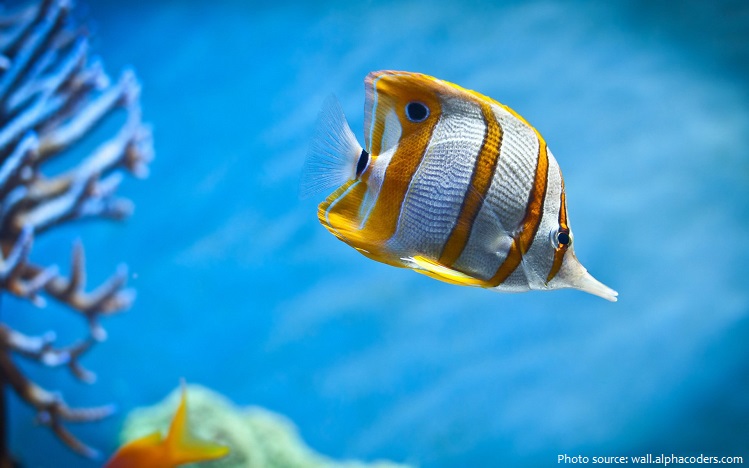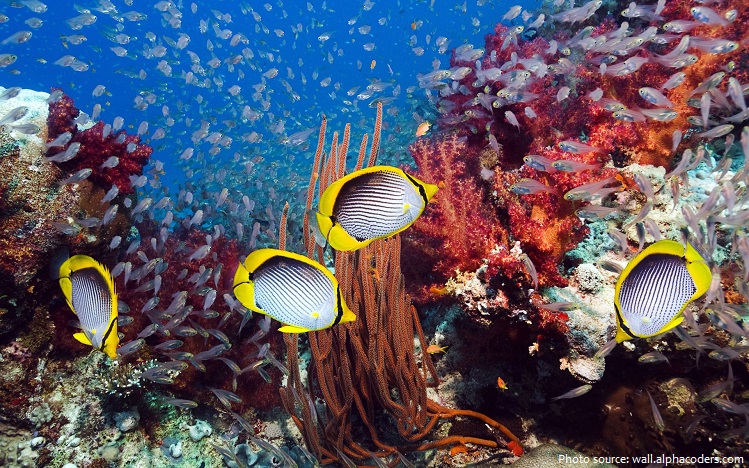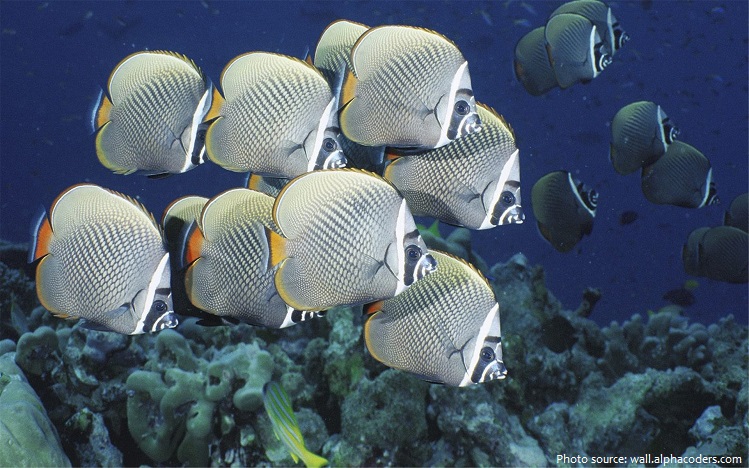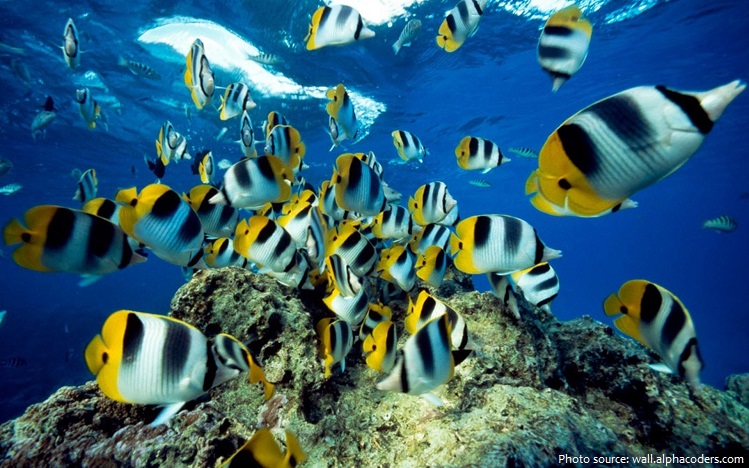Butterflyfish also spelled butterfly fish are a group of conspicuous tropical marine fish in the family Chaetodontidae.
There are about 129 species in 12 genera.
Butterflyfish live mostly on the reefs of the Atlantic, Indian and Pacific Oceans.
They are most often found in shallow (less than 20 m / 65 ft) water near coral reefs, but some are deepwater dwellers descending to 200 m (655 ft).
Some occur in seagrass habitats, deep mudflats, or shallow lagoons.
The butterfly fish can live up to 7 years in the wild and up to 10 years in a well kept aquarium.
Butterflyfish mostly range from 12 to 22 cm (4.7 to 8.7 in) in length. The largest species, the lined butterflyfish and the saddle butterflyfish, C. ephippium, grow to 30 cm (12 in).
They are deep-bodied and thin from side to side, with a single dorsal fin and a small mouth with tiny bristlelike teeth.
The common name references the brightly colored and strikingly patterned bodies of many species, bearing shades of black, white, blue, red, orange, and yellow. Butterflyfish are also known for their beautiful and unique patterns. However, there are some species are dull in color.
Most butterflyfishes have a dark band obscuring the eye, and often have a false eye spot in contrasting colors near the tail. These two attributes may confuse predators.
Butterflyfish are diurnal animals, which means they are active and feed during the day and rest on the coral during the night.
At night, the butterflyfish’s brilliant colors fade to blend in with the reef’s dark crevices.
The jaws of some butterflyfishes can measure more than 25% of their body length.
Jaw shape and size correlates with the type of prey consumed; some butterflyfishes feed upon small invertebrates or algae, others solely on coral polyps (known as corallivores), and still others upon zooplankton.
Butterflyfish generally stay in groups unless they are a particularly territorial species. A solitary Butterflyfish is usually travelling in search of a mate. They are one of the very few fish who find a mate, and then hunt, live and travel together for life.
Butterflyfish are pelagic spawners; that is, they release many buoyant eggs into the water, which become part of the plankton, floating with the currents until hatching. The fry go through a tholichthys stage, wherein the body of the postlarval fish is covered in large, bony plates extending from the head. They lose their bony plates as they mature. In many species of butterflyfish, juveniles have a color pattern that is quite distinct from their adult form.
Butterfly fish are preyed upon by a number of larger reef fish like moray eels, snappers, and groupers.
Their coloration also makes them popular aquarium fish.
The fossil record of this group is marginal. Their restriction to coral reefs means their carcasses are liable to be dispersed by scavengers, overgrown by corals, and any that do fossilize will not long survive erosion. However, Pygaeus, a very basal fossil from the mid- to late Eocene of Europe, dates from around the Bartonian 40-37 million years ago.
The family name “Chaetodontidae” derives from the Ancient Greek words χαιτέ, chaite (“hair”) and οδοντος, odontos (“tooth”). This is an allusion to the rows of brush-like teeth found in their small, protrusible mouths.





